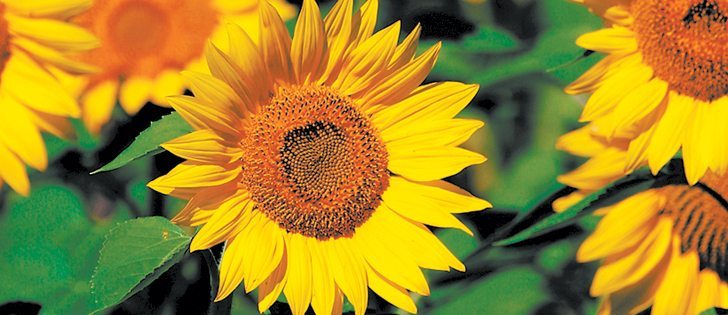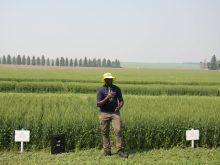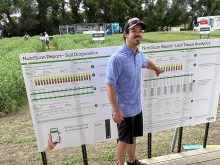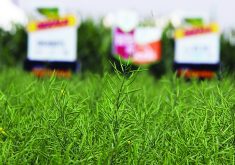Developing commercially viable oilseed Researcher looks to develop high yielding, disease resistant perennial grain crop sunflowers
CARMAN, Man. — A commercially viable perennial sunflower crop may eventually become a reality but not for 15 to 20 years.
Sean Asselin, a University of Manitoba masters student, told a recent tour of the U of M research farm near Carman that his native sunflower project has a two-pronged approach.
He is looking for genetic traits that will increase yield and create better disease resistance in annual sunflower crops, but he is also exploring the possibility of developing perennial grain crop sunflowers with a yield high enough to make them commercially viable.
Read Also

More work wanted on removing red tape
REGINA — Canadian farmers risk falling further behind competitors if two main federal agencies don’t become more efficient and responsive…
Asselin said there are seven native sunflower species in Manitoba, and he is working with the five perennial species. He is running field plots to compare them to each other in terms of seed size and disease resistance.
“Seed size is a major component of yield in annual sunflower. We’re hoping to find genetic traits to increase seed size in our existing sunflowers,” Asselin said.
“That might come through a fewer number of stems or maybe larger stems with larger discs. The major disease resistant trait we’re looking at right now is sclerotinia. That’s the most damaging disease in sunflower.”
He said he has isolated native sunflower material that is sclerotinia resistant and hopes to further characterize that resistance.
“We want to look at the genetic diversity of that sclerotinia source (of plant material) to see if we can facilitate integration into the genetics of our annual sunflower varieties,” he said.
One native sunflower variety in particular, the Maximillion, has a lot of commercial potential, Asselin said.
“The plant material has properties used in making low molecular weight plastics,” he said.
“The fatty acid profile has interesting things. It is high in linoleic acid, so it has potential for livestock feed. It also has potential as a forage crop. One of the good things about these kinds of perennial forage crops is they start growing early in the spring and keep growing, so you get more than one harvest. A lot of work has already been done at the Land Institute in Kansas. They’ve been selecting for seed size and they’re giving us some of their plant material to work with.”
The Kansas native sunflower breeding program began only 10 years ago, but researchers have already found genetic traits that can be incorporated into commercial sunflower production.
Asselin’s research is also looking for rust-resistant traits from native sunflowers in a project at the U of M greenhouses.
“The greenhouse is different from the field,” he said.
“We don’t want to produce inocu-lants and put them out into an open setting. If we keep them in the greenhouse, it’s a controlled setting. We’re just learning how to manage these native plant materials. They are very different from our hybrid sunflower varieties.”
Asselin said native perennials have a different growth pattern. He expects the trend will be to make the native perennials more like the commercial sunflower varieties in terms of yield but keep them as perennials.
A number of native perennial plant species in the U of M project have commercial viability.
Asselin thinks the projects that are closest to putting seed into farmers’ fields are intermediate wheat grass, perennial rye and perennial wheat grass.


















